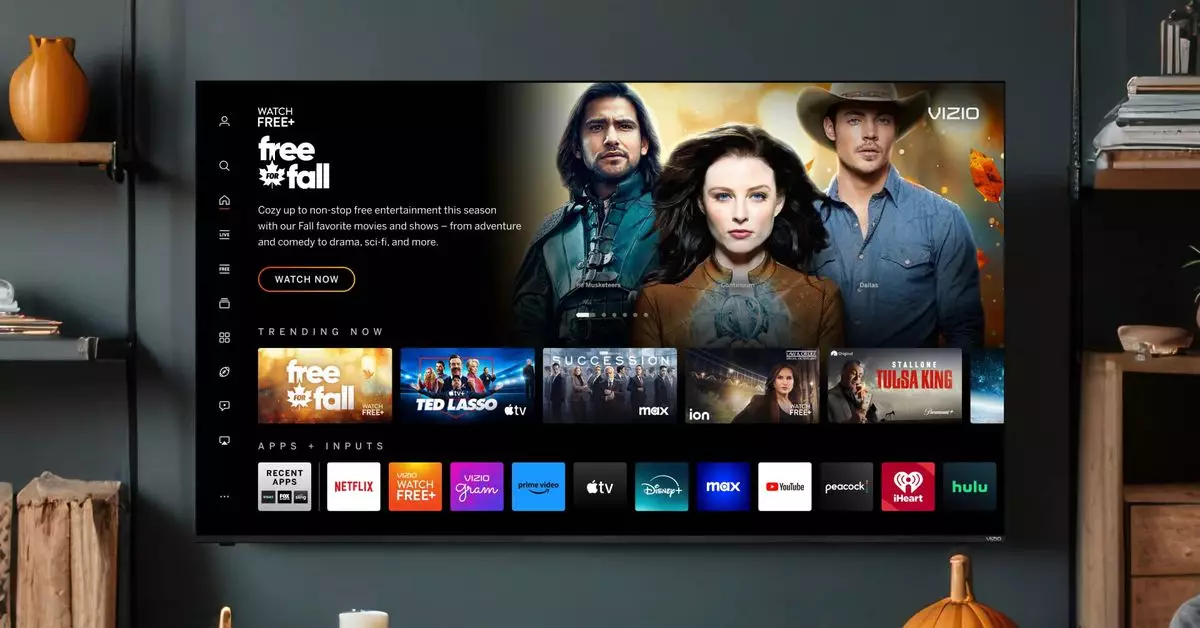In a significant shift within the consumer technology sector, Walmart’s recent acquisition of Vizio for $2.3 billion marks a strategic enhancement of its advertising capabilities. This merger is not merely a financial transaction; it symbolizes Walmart’s attempt to harness advanced data-driven advertising techniques that have become paramount in today’s market. The retail giant’s interest in Vizio is rooted in the latter’s established advertising platform, Platform Plus, which has been notably effective in generating revenue, with advertising and data analytics accounting for the majority of Vizio’s profits.
Walmart’s intent to leverage Vizio’s data analytics expertise should be viewed as an effort to compete more robustly with existing players like Roku. By integrating Vizio’s advertising capabilities, Walmart aims to refine its ability to target advertisements more effectively. The enormous potential for targeted advertising relies on insightful data—something Vizio has had in the past but has faced scrutiny over. In 2017, the company was penalized for its previous practices of tracking viewer data without consent, casting a shadow on its credibility in handling user privacy.
This acquisition allows Walmart not only to fortify its advertising division but also to explore newer avenues of selling advertisements both in-store and digitally. This could lead to revolutionary changes in how consumers experience advertising, particularly if Walmart implements ad placements directly on Vizio televisions. Persistence in enhancing ad performance by tapping into customer data marks a competitive edge that Walmart is evidently eager to realize.
However, Walmart’s acquisition raises alarm bells among privacy advocates. With a past marred by data privacy controversies, Vizio’s association with Walmart could renew scrutiny on data protection processes. The concerns around consumer privacy are a growing issue in today’s digital age—especially with data breaches and unauthorized data collection making headlines. Consequently, both companies will need to prioritize transparency and consumer trust as they move forward with the integration process.
While Vizio may have previously struggled to find its footing among budget brands, joining forces with Walmart could elevate its market position. As Walmart ventures deeper into the television and advertising business, it must balance rapid growth and innovation with the ethical implications of customer data usage.
Despite these concerns, both companies will maintain distinct operations in the near term. Vizio Chief Executive Officer William Wang will continue to lead the company, ensuring that its operational integrity remains intact as Walmart integrates its advertising strategies. The future of this partnership seems promising, particularly as Walmart aims to nurture Vizio’s evolving advertising model, which has already begun to attract a diverse array of consumers.
As Walmart dips its toes deeper into this new domain, the potential for cross-platform advertising innovation is immense. Vizio could benefit significantly from Walmart’s extensive retail network and customer data insights, setting the stage for a competitive stance against other entertainment providers. The merger not only signifies a meaningful advance in Walmart’s advertising ambitions but also reshapes the landscape of consumer technology and digital advertising ecosystems. This strategic acquisition could indeed serve as a catalyst for future growth—not just for Walmart and Vizio but for the entire advertising marketplace.

